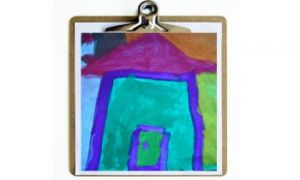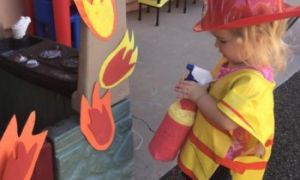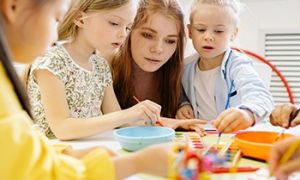The value of play in early childhood cannot be overstated, as it is essential for a child's overall development and well-being. The following article provides information on Why Play Is So Valuable, What Is Play?, Why Is Play Important For Children's Development, Educator's Role In Play, Styles Of Play, What Happens When Children Don't Play, How To Encourage Children To Play, Play Theories, Linking Play To The EYLF and more.
Why Play Is So Valuable
The value of play in early childhood cannot be overstated, as it is essential for a child's overall development and well-being. Here are some key reasons why play is so valuable:
Cognitive Development
-
Stimulates Brain Growth: Play activities like puzzles, building blocks, and problem-solving games encourage cognitive development and help children develop critical thinking and creativity.
Social Skills
-
Builds Social Competence: Through interactive play, children learn important social skills such as sharing, cooperation, negotiation, and empathy. These skills are crucial for building healthy relationships and effective communication.
Emotional Well-Being
-
Emotional Expression and Regulation: Play allows children to express their emotions, explore different scenarios, and develop emotional resilience. This helps them understand and manage their feelings, leading to better emotional well-being.
Physical Development
-
Enhances Motor Skills: Active play, such as running, jumping, and climbing, is essential for physical development. It helps children develop motor skills, coordination, and overall physical fitness.
Language and Literacy
-
Fosters Communication: Play often involves verbal interactions, which enhance language development. Storytelling, role-playing, and interacting with peers expand children's vocabulary and improve their communication skills.
Creativity and Imagination
-
Encourages Innovation: Imaginative play allows children to explore new ideas and concepts, fostering creativity and innovative thinking. Activities like drawing, building, and pretend play help children use their imagination and think outside the box.
Cultural Understanding
-
Promotes Diversity Awareness: Play can introduce children to different cultures and traditions, helping them learn about diversity and respect for others. This fosters a global perspective and cultural awareness.
What Is Play?
Play is a voluntary, enjoyable activity that is done for its own sake rather than for any external reward. It involves engaging in activities that are intrinsically motivated, providing a sense of pleasure and fulfillment. Play can take many forms, including physical activities, imaginative scenarios, social interactions, and the use of objects.
Characteristics of Play
-
Voluntary and Self-Directed: Play is not forced or obligatory. It is a choice made freely by the participant, driven by internal motivation and personal interest.
-
Pleasurable and Fun: The primary purpose of play is enjoyment. It brings joy, excitement, and a sense of satisfaction.
-
Non-Goal-Oriented: Unlike work or other tasks, play does not have a specific end goal or practical outcome. The process and experience itself are what matter.
-
Spontaneous and Creative: Play often involves creativity and improvisation. It allows individuals to explore new ideas, experiment, and innovate.
-
Flexible and Adaptive: Play can change and adapt to different situations, environments, and participants. It encourages flexibility and adaptability.
-
Social and Interactive: Many forms of play involve interaction with others, fostering social bonds, communication, and cooperation.
Benefits of Play
-
Cognitive Development: Play stimulates the brain and enhances cognitive abilities such as problem-solving, critical thinking, and creativity.
-
Physical Development: Active play promotes physical health, motor skills, coordination, and overall fitness.
-
Emotional Development: Play allows individuals to express and understand emotions, develop resilience, and build self-esteem.
-
Social Skills: Play teaches social norms, cooperation, negotiation, and conflict resolution.
-
Language and Communication: Play often involves verbal interactions, expanding vocabulary, improving grammar, and enhancing communication skills.
Types of Play
-
Physical Play: Activities that involve physical movement, such as running, jumping, climbing, and sports.
-
Imaginative Play: Pretend play, role-playing, and scenarios that involve creativity and imagination.
-
Social Play: Interactive play with others, including games, team sports, and group activities.
-
Object Play: Using toys, tools, and other objects to explore and interact with the environment.
-
Exploratory Play: Activities that involve discovering and learning about the world, such as nature walks and experiments.
Why Is Play Important For Children's Development?
Play is incredibly important for children's development for several reasons. Here are some of the key benefits:
Cognitive Development
Play stimulates the brain, fostering essential cognitive skills such as problem-solving, critical thinking, and creativity. Activities like puzzles, building blocks, and imaginative play help children develop these skills, forming a strong foundation for academic success.
Social Skills
Interactive play teaches children social skills like cooperation, negotiation, and conflict resolution. By playing with peers, children learn to share, take turns, and empathize with others. These experiences are vital for building healthy relationships and effective communication.
Emotional Development
Play allows children to express and understand their emotions. Through imaginative play, they can explore different scenarios, process their experiences, and develop emotional resilience. This helps them regulate their emotions and build self-esteem.
Physical Development
Active play, such as running, jumping, and climbing, is essential for physical development. It helps children develop motor skills, coordination, and overall physical fitness. Engaging in physical activities also promotes a healthy lifestyle and prevents childhood obesity.
Language and Literacy
Play often involves communication, enhancing language development. Through storytelling, role-playing, and interacting with peers, children expand their vocabulary, improve grammar, and develop narrative skills. These activities lay the groundwork for reading and writing.
Styles Of Play
Play comes in various styles and forms, each offering unique benefits and engaging children in different ways. Here are some common styles of play:
1. Physical Play
Physical play involves activities that require physical movement, such as running, jumping, climbing, and dancing. This type of play helps develop motor skills, coordination, and overall physical fitness. Examples include playing tag, hopscotch, or participating in sports.
2. Social Play
Social play involves interactions with others and helps children develop social skills like cooperation, negotiation, and communication. This type of play can include group games, role-playing, and playing with friends or family members.
3. Imaginative/Creative Play
Imaginative play, also known as pretend play, involves children using their imagination to create scenarios and stories. This type of play helps develop creativity, problem-solving skills, and emotional expression. Examples include playing house, dressing up in costumes, or creating stories with toys.
4. Constructive Play
Constructive play involves building or creating something, often using toys like building blocks, Legos, or art supplies. This type of play helps develop fine motor skills, spatial awareness, and cognitive abilities. Examples include constructing buildings with blocks, drawing, or crafting.
5. Exploratory Play
Exploratory play involves children exploring their environment and discovering new things. This type of play helps develop curiosity, sensory skills, and cognitive understanding. Examples include playing with sand, water, or discovering nature.
6. Rough-and-Tumble Play
Rough-and-tumble play involves physical activities that mimic play fighting or wrestling. This type of play helps children develop physical strength, coordination, and social skills, such as understanding boundaries and managing emotions. Examples include play wrestling, rolling around, or friendly sparring.
7. Symbolic Play
Symbolic play involves using objects or actions to represent something else. This type of play helps develop abstract thinking and understanding of symbols. Examples include using a stick as a sword, pretending a box is a spaceship, or using dolls to act out a story.
8. Digital Play
Digital play involves using technology and digital devices for interactive games and activities. This type of play helps develop digital literacy, problem-solving skills, and can offer educational content. Examples include playing video games, using educational apps, or engaging in virtual reality experiences.
Each style of play contributes to different aspects of a child's development and provides opportunities for learning and growth. By encouraging a variety of play styles, children can benefit from a well-rounded play experience.
Educator's Role In Play
Educators play a vital role in facilitating and enhancing children's play experiences. Here's how they can effectively support and promote play:
1. Creating a Safe and Stimulating Environment
-
Safety First: Ensure that the play environment is safe, free from hazards, and equipped with age-appropriate toys and materials.
-
Variety of Resources: Provide a diverse range of toys, games, and materials that cater to different types of play, such as imaginative play, physical play, and exploratory play.
2. Observing and Understanding
-
Observation: Carefully observe children during play to understand their interests, strengths, and areas for growth. This helps in planning activities that are meaningful and engaging.
-
Responsive Interactions: Respond to children's cues and interests, offering support and guidance when needed, while allowing them the freedom to explore and make choices.
3. Facilitating Play
-
Role Modeling: Demonstrate play behaviors and interact with children in ways that encourage participation and exploration.
-
Scaffolding: Provide appropriate support and challenges to extend children's learning during play. This may involve asking open-ended questions, introducing new concepts, or guiding problem-solving.
4. Encouraging Social Play
-
Promoting Collaboration: Encourage cooperative play by providing opportunities for group activities and games that require teamwork and communication.
-
Conflict Resolution: Teach and model conflict resolution skills, helping children navigate social interactions and develop empathy and understanding.
5. Incorporating Cultural and Individual Differences
-
Cultural Awareness: Recognize and respect the diverse cultural backgrounds of children and incorporate culturally relevant materials and activities into play.
-
Individual Needs: Adapt play activities to meet the individual needs and abilities of each child, ensuring inclusivity and equal opportunities for all.
6. Balancing Structured and Unstructured Play
-
Structured Activities: Plan and organize structured play activities that introduce new skills and concepts in an engaging way.
-
Unstructured Play: Provide ample time and space for unstructured, child-led play, allowing children to explore their interests and creativity freely.
7. Documenting and Reflecting
-
Documentation: Keep records of children's play experiences through observations, photos, and anecdotal notes. This helps track progress and informs future planning.
-
Reflection: Reflect on the effectiveness of play activities and make adjustments to better support children's development and learning.
8. Engaging Families and Communities
-
Family Involvement: Encourage family participation in play activities and share information with parents about the importance of play in child development.
-
Community Resources: Utilize community resources, such as parks, libraries, and cultural centers, to enrich play experiences and provide diverse opportunities for learning.
By actively supporting and promoting play, educators can create a rich and dynamic learning environment that fosters children's growth, development, and well-being. I
What Happens When Children Don't Play
The consequences of a lack of play in children can be quite severe and far-reaching. Here are some significant impacts:
Cognitive Impacts
-
Limited Brain Development: Play stimulates brain development. Without it, children might have fewer neural connections, leading to delayed cognitive development.
-
Reduced Creativity: Play fosters creativity and imagination. A lack of play can result in stunted creative thinking and problem-solving skills.
Social Impacts
-
Poor Social Skills: Play is crucial for developing social skills like cooperation, negotiation, and conflict resolution. Children who don't engage in play may struggle with these skills and have difficulty forming healthy relationships.
-
Increased Isolation: Without play, children might experience increased feelings of loneliness and isolation, as they miss out on opportunities to interact with peers and build friendships.
Emotional Impacts
-
Emotional Dysregulation: Play helps children understand and manage their emotions. A lack of play can lead to difficulties in regulating emotions and increased susceptibility to stress and anxiety.
-
Lower Self-Esteem: Play builds confidence and self-esteem. Without it, children might struggle with low self-worth and feelings of incompetence.
Physical Impacts
-
Delayed Motor Skills: Physical play is essential for developing motor skills and overall physical fitness. Children who don't play actively might have delayed motor skill development and be at higher risk for obesity.
-
Health Issues: A sedentary lifestyle resulting from a lack of active play can lead to various health problems, such as obesity, poor cardiovascular health, and reduced physical fitness.
Educational Impacts
-
Decreased Academic Performance: Play improves concentration, memory, and learning. Children who don't engage in play may have lower academic performance and find it challenging to stay focused in school.
-
Limited Problem-Solving Skills: Through play, children learn to solve problems and think critically. Without these experiences, they may struggle with problem-solving in academic and everyday situations.
Behavioral Impacts
-
Increased Aggression: Play teaches children about empathy and understanding others' perspectives. A lack of play can result in increased aggression and difficulty in managing conflicts peacefully.
-
Behavioral Issues: Children who don't have opportunities to play might exhibit behavioral problems, such as hyperactivity, inattention, and oppositional behavior.
Long-Term Impacts
-
Mental Health Issues: The lack of play in childhood can have long-lasting effects, contributing to mental health issues such as depression, anxiety, and antisocial behavior in adulthood.
-
Reduced Resilience: Play helps children build resilience and cope with challenges. Without it, they may struggle to handle stress and adversity later in life.
How To Encourage Children To Play
Encouraging children to play involves creating an environment that fosters their natural curiosity and creativity. Here are some effective strategies:
1. Provide a Safe and Stimulating Environment
-
Safe Space: Ensure the play area is safe, free from hazards, and equipped with age-appropriate toys and materials.
-
Variety of Toys and Materials: Offer a diverse range of toys, including building blocks, art supplies, books, and outdoor play equipment. This variety encourages different types of play and exploration.
2. Set Aside Regular Playtime
-
Daily Playtime: Dedicate specific times each day for unstructured play. This helps children understand that play is a priority and an important part of their routine.
-
Balance with Structured Activities: While structured activities are valuable, make sure there is enough time for free play where children can make their own choices.
3. Encourage Outdoor Play
-
Nature Exploration: Take children to parks, gardens, and natural settings where they can explore and engage in physical activities like climbing, running, and playing with natural elements.
-
Outdoor Games: Organize simple outdoor games like hide-and-seek, tag, or scavenger hunts to keep them active and engaged.
4. Be an Active Participant
-
Join the Fun: Sometimes, playing together with children can boost their enthusiasm. Be an active participant in their games, and show interest in what they're doing.
-
Follow Their Lead: Allow children to take the lead in play activities. Let their imagination guide the play and support their ideas.
5. Encourage Social Play
-
Playdates: Arrange playdates with peers to help children develop social skills and learn how to interact with others.
-
Group Activities: Encourage participation in group activities and games that require teamwork and cooperation.
6. Limit Screen Time
-
Screen-Free Zones: Create areas in the home where screens are not allowed, promoting more opportunities for active play.
-
Alternative Activities: Provide engaging alternatives to screen time, such as puzzles, board games, and craft projects.
7. Foster Imagination and Creativity
-
Pretend Play: Encourage imaginative play by providing costumes, props, and toys that inspire creativity, such as dolls, action figures, and play kitchens.
-
Storytelling and Role-Playing: Engage in storytelling and role-playing activities that stimulate children's imagination and language development.
8. Celebrate Play
-
Acknowledge and Praise: Recognize and praise children's efforts and creativity during play. Celebrate their achievements and the joy they find in playing.
-
Create Play Traditions: Establish family traditions that involve play, such as weekly game nights or family outings, to create lasting memories.
By creating an environment that values and encourages play, you can help children develop essential skills, foster their creativity, and ensure they have fun while learning and growing.
Play Theories
Play theories provide valuable insights into the role of play in child development and learning. Here are some of the most influential play theories:
1. Piaget's Cognitive Development Theory
-
Stages of Play: Jean Piaget identified different stages of cognitive development, each associated with distinct types of play.
-
Sensorimotor Stage (0-2 years): Play involves sensory exploration and motor activities, such as grasping and manipulating objects.
-
Preoperational Stage (2-7 years): Play becomes more imaginative, involving symbolic and pretend play.
-
Concrete Operational Stage (7-11 years): Play includes more structured games with rules and logical thinking.
-
2. Vygotsky's Sociocultural Theory
-
Social Interaction: Lev Vygotsky emphasized the importance of social interaction in play. He believed that play helps children develop higher mental functions through social interactions with more knowledgeable others (adults or peers).
-
Zone of Proximal Development (ZPD): Vygotsky introduced the concept of ZPD, where play allows children to perform activities beyond their current abilities with the help of guidance and collaboration.
3. Parten's Stages of Play
-
Types of Social Play: Mildred Parten identified different stages of social play, highlighting how children's interactions evolve over time.
-
Unoccupied Play: Random movements and exploration without a specific purpose.
-
Solitary Play: Playing alone and independently.
-
Onlooker Play: Observing others play without direct involvement.
-
Parallel Play: Playing alongside others without direct interaction.
-
Associative Play: Engaging in similar activities with others, with some interaction.
-
Cooperative Play: Fully interacting and collaborating with others in shared activities.
-
4. Erikson's Psychosocial Development Theory
-
Stages of Development: Erik Erikson identified stages of psychosocial development, each associated with specific challenges and play experiences.
-
Initiative vs. Guilt (3-6 years): Play allows children to explore their environment, develop initiative, and practice decision-making.
-
Industry vs. Inferiority (6-12 years): Play helps children develop a sense of competence and accomplishment through teamwork and skill-building activities.
-
5. Freud's Psychoanalytic Theory
-
Cathartic Function: Sigmund Freud viewed play as a way for children to express and work through unconscious desires and emotions. Play serves as a cathartic function, allowing children to process their experiences and resolve internal conflicts.
6. Csikszentmihalyi's Flow Theory
-
Optimal Experience: Mihaly Csikszentmihalyi's concept of "flow" describes the state of being fully immersed and engaged in an activity. Play can provide the optimal experience of flow, where children are deeply focused, enjoy the activity, and lose track of time.
7. Bateson's Metacommunication Theory
-
Communication and Play: Gregory Bateson emphasized the importance of metacommunication in play. Children use play to communicate and understand the context of their interactions, distinguishing between play and reality.
8. Hughes' Taxonomy of Play Types
-
Variety of Play: Bob Hughes identified 16 different types of play, including physical play, imaginative play, social play, and more. This taxonomy highlights the diverse ways children engage in play and the various benefits they gain from each type.
Understanding these play theories provides valuable insights into the importance of play in child development and helps caregivers and educators create enriching play experiences for children.
Linking Play To The EYLF
The Early Years Learning Framework (EYLF) for Australia emphasizes the importance of play in children's learning and development. Here's how play is linked to the EYLF:
Belonging, Being, and Becoming
The EYLF is structured around three key concepts: Belonging, Being, and Becoming. Play is integral to each of these concepts:
Belonging
-
Sense of Identity: Play helps children develop a strong sense of identity by allowing them to explore roles and scenarios. This fosters their emerging autonomy, interdependence, resilience, and sense of agency.
-
Connection to Community: Through play, children learn to interact with others, understand social norms, and develop a sense of belonging to groups and communities.
Being
-
Wellbeing: Play promotes physical, emotional, and social wellbeing. It encourages children to use their bodies, express their emotions, and build relationships with peers and adults.
-
Engagement: Play engages children in meaningful activities that are enjoyable and intrinsically motivating.
Becoming
-
Confident and Involved Learners: Play-based learning helps children develop dispositions for learning such as curiosity, cooperation, confidence, creativity, and commitment.
-
Effective Communicators: Through play, children practice verbal and non-verbal communication, express ideas, and make meaning using various media.
-
Problem Solvers: Play encourages children to solve problems, experiment, and explore new ideas.
Play-Based Learning and Intentionality
The EYLF highlights the importance of intentional teaching within play-based learning. Educators are encouraged to be deliberate and thoughtful in their approach to supporting children's learning through play. This involves planning and creating environments that promote different types of play, supporting children's active engagement, agency, problem-solving, curiosity, creativity, and exploration.
Practical Implementation
-
Educator's Role: Educators act as facilitators, guiding children's play, providing resources, and creating opportunities for learning.
-
Learning Environment: The physical environment should be rich in materials and opportunities for play, both indoors and outdoors.
-
Collaboration: Educators collaborate with families and communities to support children's play experiences and learning.
By integrating play into the EYLF, children are provided with a holistic learning experience that supports their development across multiple domains.
Further Reading
Unstructured Play Materials For Children
Spontaneous Play In Early Childhood
Child Theorists and Their Theories in Practice
Benefits Of Interest Areas
Open Ended Play Materials
Stages Of Play
Kenneth Rubin - Theories Of Play
Benefits Of Risk Play For Children


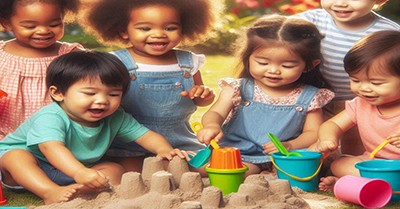




 As an Educator in Australia, your pay rate falls under the Children’s Services Award 2010. This award states the minimum amount that an employer can
As an Educator in Australia, your pay rate falls under the Children’s Services Award 2010. This award states the minimum amount that an employer can When working as a qualified Early Childhood Teacher (with a university degree) within a service, your rate of pay will come from the Educational Services
When working as a qualified Early Childhood Teacher (with a university degree) within a service, your rate of pay will come from the Educational Services When working as a Diploma Qualified Educator your pay rate is from the Children's Services Award 2010. This Award states your minimum rate of pay
When working as a Diploma Qualified Educator your pay rate is from the Children's Services Award 2010. This Award states your minimum rate of pay When working as a Cert 3 Qualified Educator, your pay rate is from the Children's Services Award 2010. This Award states your minimum rate of
When working as a Cert 3 Qualified Educator, your pay rate is from the Children's Services Award 2010. This Award states your minimum rate of Educational Leaders play a crucial role in their early childhood service by ensuring that the educational program aligns with best practices and supports the holistic
Educational Leaders play a crucial role in their early childhood service by ensuring that the educational program aligns with best practices and supports the holistic In early childhood education and care, ratios are more than a technicality—they are a frontline safeguard. Every child deserves responsive supervision, emotional connection, and developmental
In early childhood education and care, ratios are more than a technicality—they are a frontline safeguard. Every child deserves responsive supervision, emotional connection, and developmental Here’s a comprehensive Mobile Phone and Smart Watch Policy tailored for early childhood education and care (ECEC) services in Australia, aligned with the latest 2025
Here’s a comprehensive Mobile Phone and Smart Watch Policy tailored for early childhood education and care (ECEC) services in Australia, aligned with the latest 2025 With the new national child safety reforms kicking in on 1 September 2025, early childhood services like yours have a real opportunity to lead the
With the new national child safety reforms kicking in on 1 September 2025, early childhood services like yours have a real opportunity to lead the The Sea of Fish Challenge is a national initiative that invites children, educators, families, and communities to create and display fish artworks as a symbol
The Sea of Fish Challenge is a national initiative that invites children, educators, families, and communities to create and display fish artworks as a symbol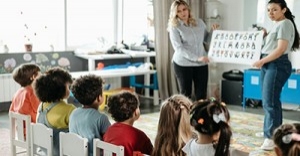 Across the early childhood education and care sector, educators are sounding the alarm: current staffing ratios are insufficient to deliver safe, meaningful, and developmentally appropriate
Across the early childhood education and care sector, educators are sounding the alarm: current staffing ratios are insufficient to deliver safe, meaningful, and developmentally appropriate